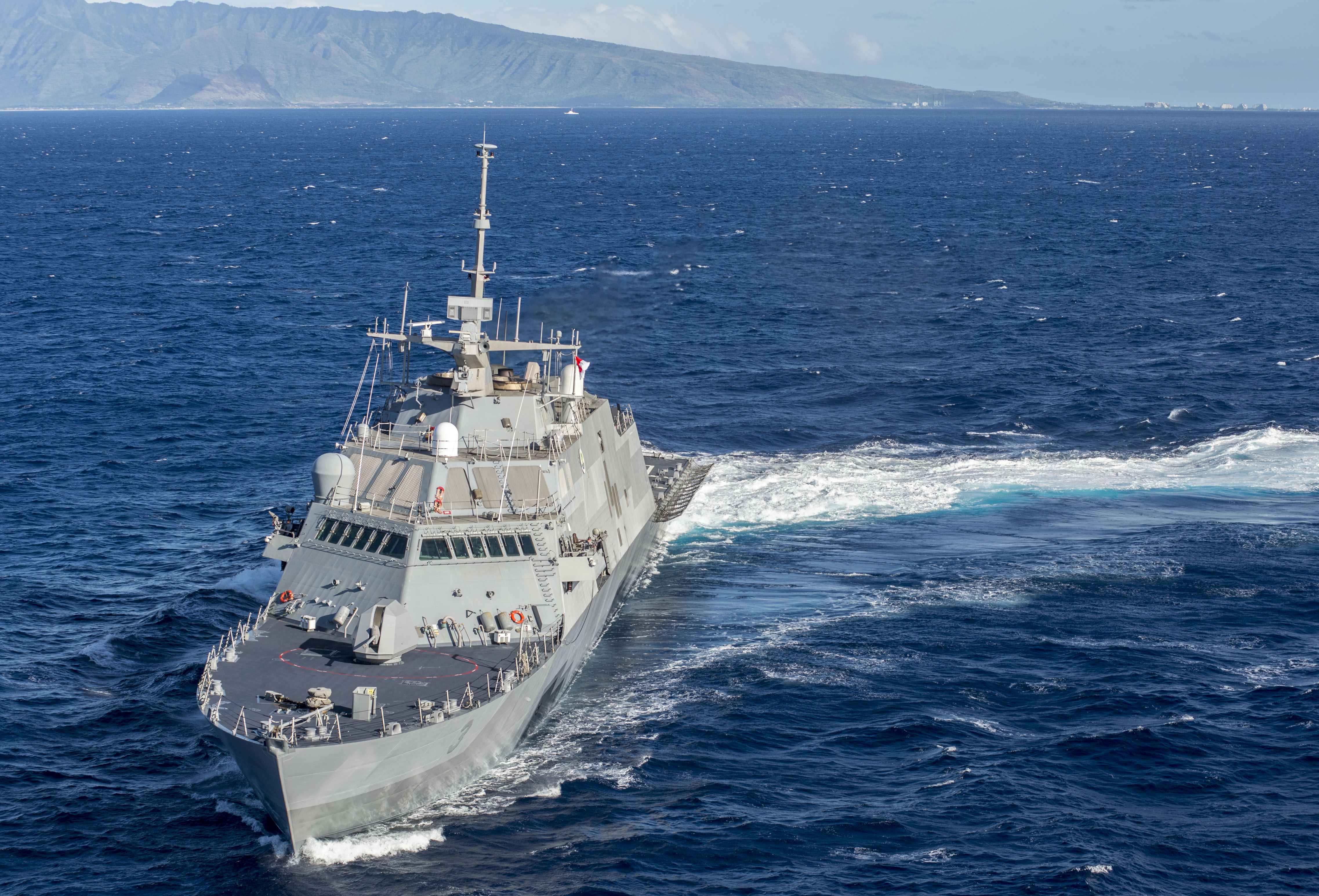
NATIONAL HARBOR, Md. – The Navy’s new frigate will go through the requirements-generation and testing processes as a flight upgrade rather than a new-start program, helping save time and money and allowing the program office to focus on what will be different from the Littoral Combat Ship (LCS) to the frigate upgrade, frigate program manager Capt. Dan Brintzinghoffer said on Wednesday.
The frigate is working its way through the Joint Requirements Oversight Council (JROC) process now to support the first two ships being bought in Fiscal Year 2019, Brintzinghoffer said at the Navy League’s Sea-Air-Space 2015 Exposition. A request for proposals with a detailed technical data package would go out in FY 2017 to allow time for industry to ask questions and prepare their bids, which means the Navy has about 18 months to finalize its design – which will include common combat systems, over-the-horizon radars and over-the-horizon missiles.
Brintzinghoffer noted that he didn’t need to decide now which of each system he would use, but rather develop a roadmap for how to ensure a common system could be chosen and engineered into the ship designs. Currently, the Lockheed Martin Freedom variant and the Austal USA Independence variant have different combat systems. Brintzinghoffer said that for the sake of lifecycle costs and fleet flexibility, the frigates would have at the very least common combat system software, if not common consoles.
These new systems, as well as the overall multimission capability the frigate will bring – compared to the mission-specific capability of the LCS and its mission packages – will all have to be thoroughly tested before deploying, Brintzinghoffer said, but he noted his testing plan would leverage as much previous testing as possible to save time and money.
“I’m not going to go through an entire testing regiment, or make that recommendation to do an entire testing regiment for the entire ship, when the propulsion plant may not have been modified,” he said during his presentation.
“I’m not going to spend money testing what we already tested. The things that add capability, the fact that multimission capability will be added to the ship, will absolutely be tested, just like you would test any new system. I’m going to try as best I can to follow in the wake of LCS. … We’re not going to skip anything; at the same time, we’re going to leverage what’s already taken place and maximize the amount of savings we can get from that testing. But nothing will get sent back out to the fleet until it’s fully tested.”
The existing LCSs will go through a backfit process that will add frigate capabilities, and the LCSs not that are not already under construction may adopt some multimission capabilities or added armoring as part of a forward-fit process, USNI News reported. Brintzinghoffer said these ships could eventually be declared frigates if the Navy secretary decides they have strong enough multimission and self-protection qualities.
To become a frigate, the modified LCS will have Mk 38 25mm machine guns, the Multi-Function Towed Array detection system, a torpedo decoy and the Raytheon SeaRAM Anti-ship missile defense system to conduct anti-submarine and surface warfare simultaneously, as well as improved armor and signature management for self-protection. To permanently affix these assets to the ship, weight will have to be taken off. Brintzinghoffer said some equipment on the LCS will no longer be necessary, such as the crane and other handling equipment needed to launch and recover the Remote Multi-Mission Vehicle included in the mine countermeasures mission package – which will be confined to the LCSs and not used on the frigates. That change alone may take out 25 tons, he said.
The Navy and shipbuilders will have to keep digging for more opportunities to save weight and power, such as reconfiguring spaces to make the ship more producible and lighter.
Brintzinghoffer said he was confident he could meet the minimum weight reduction requirements laid out by the Small Surface Combatant Task Force that generated the modified LCS concept for the frigate, and he added he hoped to go beyond their recommendations and take off even more weight so that more over-the-horizon missiles than recommended could be included, or that the variable-depth sonar could be permanently affixed to the ship instead of brought on as a “capability enhancement” when needed.
The ship will also have a surface warfare capability enhancement package, will will include Mk 50 30mm guns and rigid-hull inflatable boats for visit, board, search and seizure missions.





